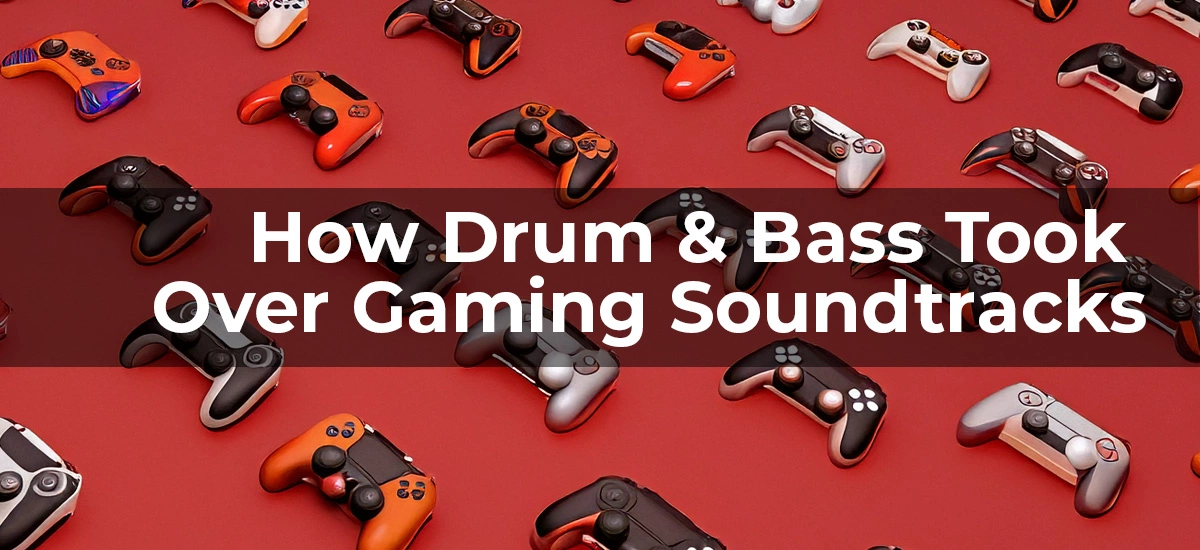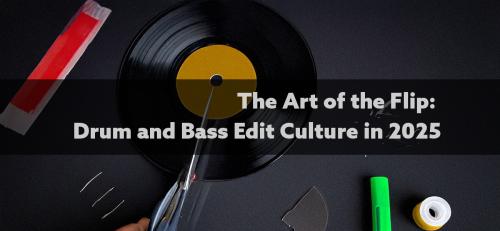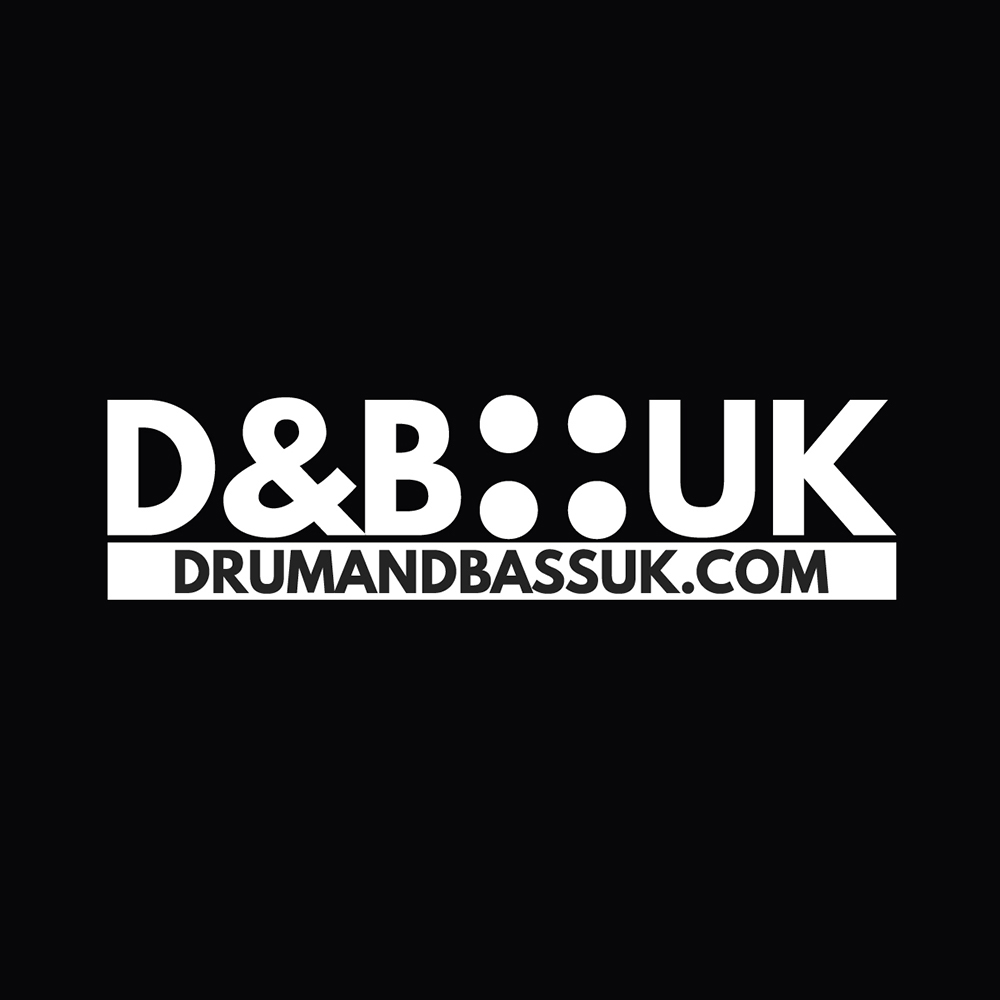
How Drum & Bass Took Over Gaming Soundtracks
Drum & Bass has long thrived on the fringes, a sound system rebel culture born in dark clubs and warehouse raves. But somewhere along the way, it slipped into the mainstream through an unlikely route: video games. Not through cheesy menu music or forgettable background loops, but through bone-rattling breaks and basslines that pulsed right through the action, shaping the rhythm of gameplay itself. Gaming didn’t just borrow from Drum & Bass—it remixed it, embedded it, and in many ways, amplified it.
Let’s rewind to the 90s. The PlayStation era. Sony's futuristic racer Wipeout wasn’t just a showcase of bleeding-edge graphics and anti-gravity craft—it came loaded with a soundtrack that slapped. The original 1995 title and its sequels (Wipeout 2097, in particular) featured tracks from Leftfield, The Chemical Brothers, and Photek, setting a new standard for what game music could be. Jungle and techno weren’t just background noise—they were the vibe.
Photek’s "Titan" and "The Third Sequence" in Wipeout 2097 were defining moments. Suddenly, jungle’s hyper-speed percussion and moody atmospheres were hurtling players through futuristic circuits at 300mph. The pace of Drum & Bass perfectly matched the visceral intensity of high-speed gaming, and the gaming world noticed.
The Early Infiltration: Jungle in the 90s
The marriage of breakbeats and pixels continued in lesser-known but cult-beloved titles. Rollcage (1999), Formula Karts Special Edition (1997), and Bomberman Hero on the N64 all dabbled in D&B aesthetics, albeit often through a jungle-adjacent lens. Developers were clearly inspired by pirate radio and underground club culture.
But it wasn’t just the futuristic racers that got the D&B treatment. The era of modding also played its part. In PC gaming, particularly in communities surrounding Quake, Half-Life, and later Counter-Strike, players and mappers would load custom soundtracks—often loaded with Dillinja, Ed Rush & Optical, or early RAM Records weapons—into their sessions. The underground was bleeding into digital space.
Drum & Bass as a Game Mechanic
Fast forward to the late 2000s and early 2010s, and the tide began to shift. D&B wasn’t just something cool to throw into a menu screen—it became part of the DNA of gameplay. Enter DJ Hero (2009), which featured tracks like "Groundhog" by Noisia. Or Need for Speed: Most Wanted (2012), which dropped heavy hitters like "Bonfire" by Knife Party (bordering on neurofunk).
First-person shooters and driving games were the natural habitat for fast, aggressive tunes. Call of Duty: Black Ops II and Far Cry 3 both licensed aggressive D&B and dubstep hybrids, using them to sonically cue high-tension moments. By this point, artists like Noisia, Spor, and even Pendulum were starting to appear on official soundtracks and bespoke mixes.
The Noisia Effect: From Clubs to Consoles
Arguably the biggest catalyst for D&B’s serious infiltration into gaming came through Noisia. The Dutch trio blurred lines between production and sound design. Their work on DmC: Devil May Cry (2013) was nothing short of genre-defining. Alongside industrialist-composer Andy LaPlegua (Combichrist), they created an aggressive, evolving, multi-layered score that pushed the console hardware to its limits.
It wasn’t just background noise—Noisia’s cues were woven directly into the game’s combo systems, enemy encounters, and narrative beats. Every time you triggered a massive aerial combo or dodged a blade at the last second, a neurofunk reese bass would tear through the mix, rewarding you with an extra hit of dopamine. The music responded to your play.
Modern Gaming: Neurofunk & Liquid Roll Deep
In recent years, Drum & Bass has continued to surface in gaming soundtracks. Cyberpunk 2077, Gran Turismo 7, and Battlefield 2042 have all featured high-energy electronic or bass-influenced tracks. While these aren’t always pure Drum & Bass, they carry the genre’s sonic hallmarks—rapid percussion, intense atmospheres, and heavy sub-bass.
Even liquid is getting its flowers. Indie titles like Hotline Miami-inspired Katana ZERO and the chill yet challenging The Ramp use atmospheric breakbeats and liquid textures to match slower or more cerebral moments. It’s not always about chaos. Sometimes Drum & Bass scores moments of clarity, flow, or even melancholy.
D&B in Esports and Streamer Culture
Drum & Bass is now embedded in the culture surrounding games, not just the games themselves. Twitch streamers use it for hype segments and background energy. Esports montages often use rollers and bangers as soundtrack fodder. Labels like UKF and Hospital Records are practically synonymous with gaming vibes now.
Gamers aren’t just passive listeners, either. They’re producers, remixers, and curators. Platforms like Monstercat have bridged the gap, licensing tracks to both streamers and games. New artists are being discovered not in clubs, but in kill-cams and lobby screens.
Why It Works: Tempo, Tension & Technology
There’s a reason D&B works so well in games. It’s not just the tempo (though 170BPM is a sweet spot for action). It’s the drama. The cinematic builds, the drops, the progression, the space it fills without overpowering. It drives momentum while keeping players immersed.
Technologically, too, the rise of middleware like FMOD and Wwise has made it easier for developers to implement adaptive, reactive music. Drum & Bass, with its tight loops and modular stems, lends itself brilliantly to these systems. Tracks can evolve, drop in intensity, or slam into a new drop depending on player behaviour.
Where It's Going
The future is wide open. As VR and AR continue to develop, we’re likely to see more interactive D&B experiences. Games like Beat Saber already thrive on rhythm, and full-blown D&B rhythm games feel inevitable.
Meanwhile, artists are releasing bespoke content for gamers. Think of it as a new kind of album rollout: one part rave, one part reactive digital world. As game audio design continues to embrace complexity, Drum & Bass is positioned to remain a powerful part of the sonic toolkit.


























Comments
0